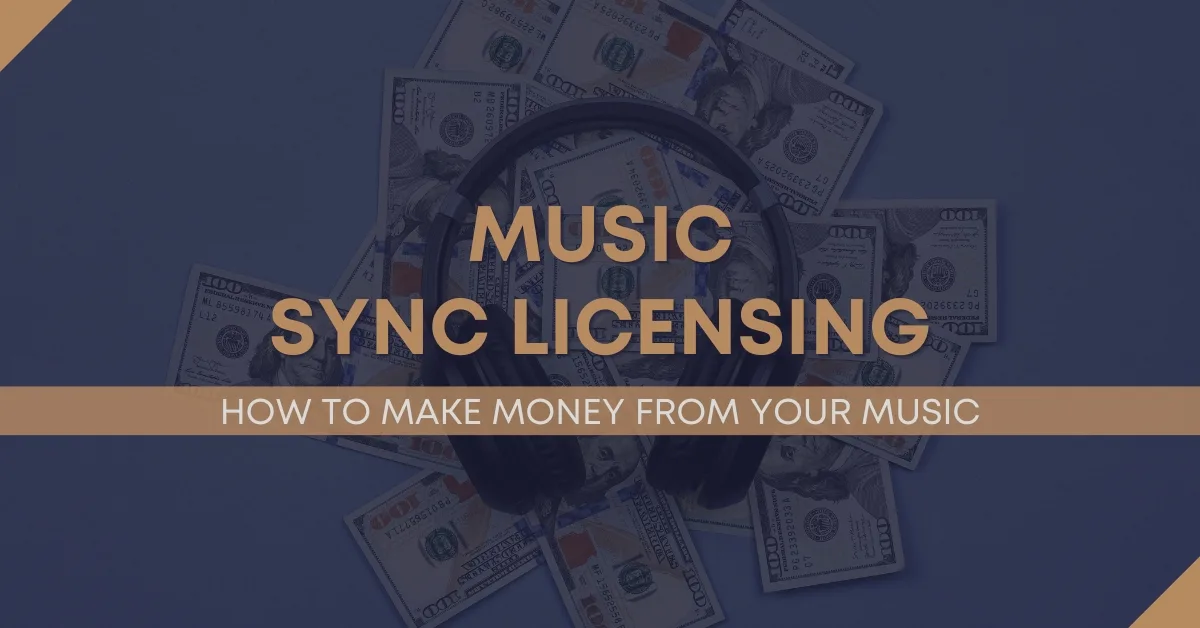
If you’re a musician, you’ve probably heard of music sync licensing. In a nutshell, it’s the process of getting your music placed in TV shows, films, video games, and other forms of media.
Sync licensing is a great way to make money from your music and see your work used in a variety of ways. It can also be a great boost to your career, helping you to gain exposure and reach new audiences.
If you’re interested in learning more about sync licensing and how to make money from your music, read on!

A sync license is a legal agreement between a musician or music copyright holder and a company that wants to use their music in a film, TV show, video game, or other form of media. The sync license grants the company the right to use the musician’s music in their project in exchange for compensation. The compensation can be in the form of a one-time fee, or ongoing royalties.
Related Article: How Much Does Spotify Pay Per Stream? Is The Payout Fair?
In order for a company to use your music in their project, they must first obtain a sync license from you or your music publisher. The company will then work with you or your publisher to negotiate the terms of the license, which will include things like the length of the license, the territory in which the music can be used, and the amount of compensation. Once the terms are agreed upon, the company will provide you with a contract which you will need to sign. Once the contract is signed, the company will be able to use your music in their project according to the terms of the agreement.
There are a few different ways to get a sync license. One way is to work with a music licensing company. These companies work with a variety of clients and can help place your music in different types of projects. They will also handle all of the paperwork and negotiations for you, so you can focus on making music.
Another way to get a sync license is to work directly with the company that wants to use your music. This can be a bit more challenging, as you will need to find the right contact and then negotiate the terms of the license yourself. However, working directly with the company can often lead to a better deal, as there are no third-party fees involved.

The amount of money you can make from music sync licensing depends on a number of factors, including the type of project, the length of the licensing agreement, and the buyer’s budget. Generally speaking, you can expect to make between $500 and $5,000 for a one-time use of your music in a TV show or film. For ongoing royalties, you can expect to make between $500 and $5,000 per year. However, these numbers can be much higher depending on who you are and what you've done in the industry.
Related Article: BMI Vs ASCAP | Who's The Best Performing Rights Organization?
One of the biggest pitfalls in music sync licensing is signing away the rights to your work without understanding the terms of the contract. Be sure to read any contract you sign carefully and make sure you understand the terms before you agree to anything. You don't want to be locked into anything you aren't happy with because contracts are near impossible to get out of.
Music sync licensing can be a great way to make money from your music and get your work used in a variety of projects. However, there are a few things you need to be aware of before you get started, including the common pitfalls of sync licensing. By being informed and aware of the potential risks, you can maximize your chances of success and make sure you get the most out of your sync licensing experience.
If you found this information helpful, please consider subscribing to my blog for more music industry articles, knowledge, and advice. Now, go out there and get yourself a sync license!
"Some of the links within this article are affiliate links. These links are from various companies such as Amazon. This means if you click on any of these links and purchase the item or service, I will receive an affiliate commission. This is at no cost to you and the money gets invested back into Audio Sorcerer LLC."